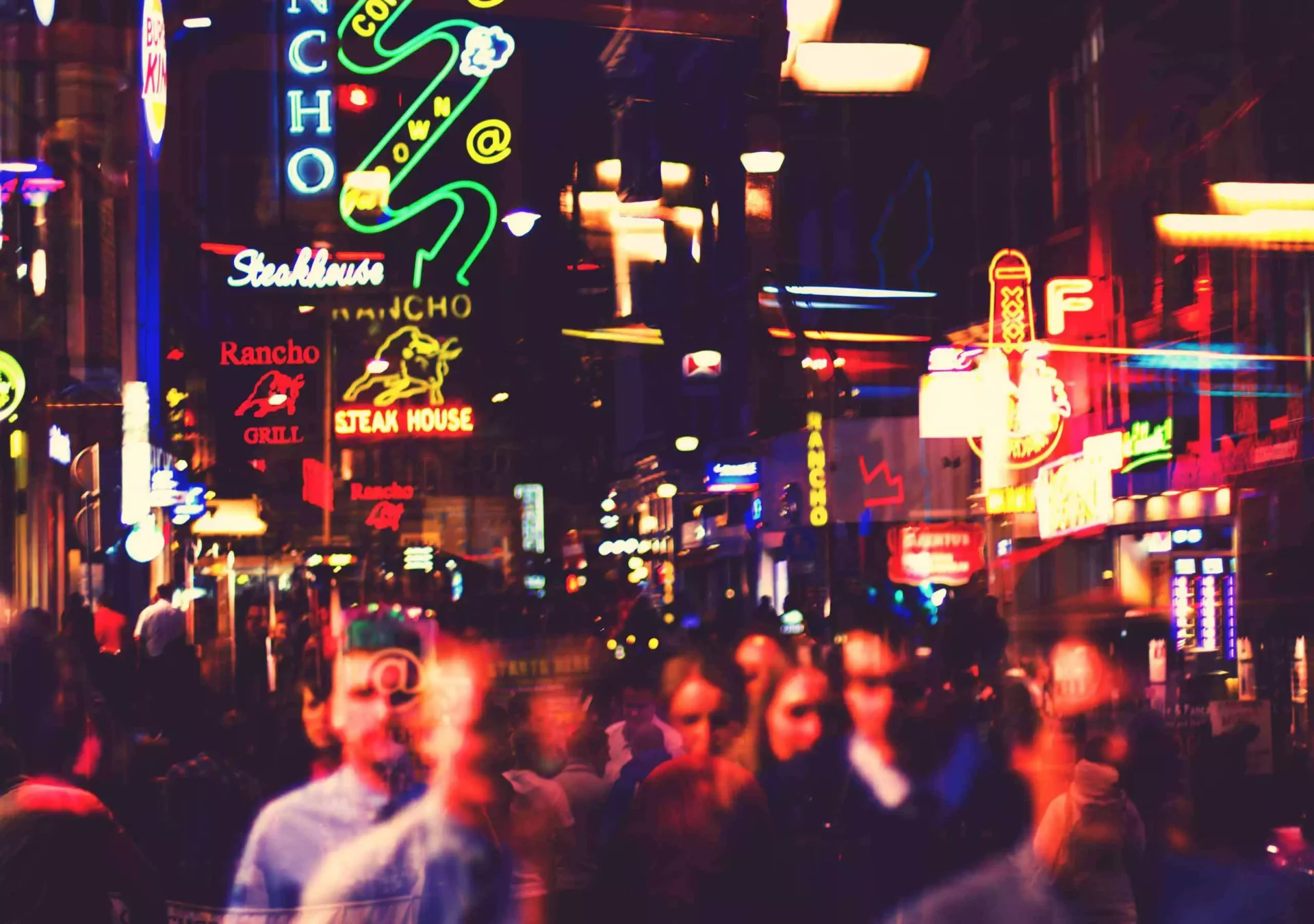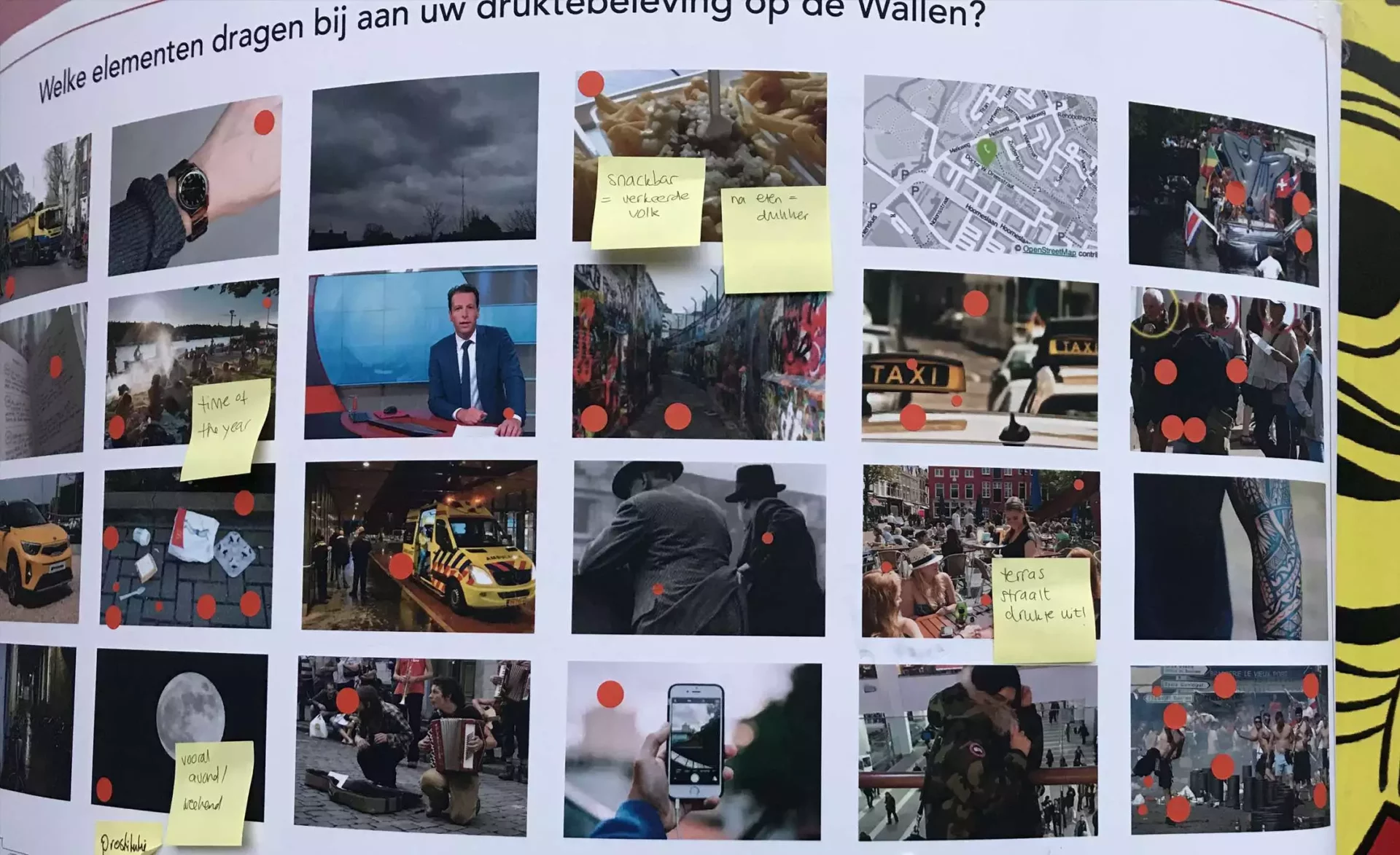Co-designing a safer red light district for Amsterdam

The red light district in Amsterdam is a popular tourist destination with all of the activity, volume of people and colourful behaviour that can go with that. We worked with the city council to design ways to avoid and alleviate problems caused by overcrowding so the area can remain a vibrant, enjoyable part of the city for all who use it.

|
Challenge
Easing overcrowding without control or coercion.
|
The city council have been capturing real-time data about the numbers of people visiting the area for some time. But having these figures doesn’t necessarily lead to an understanding of what drives overcrowding, or how best to mitigate against ill effects. They came to us seeking to understand the needs of both the people living there and tourists in order to improve the experience for both residents and visitors.
|
Approach
Adding the human element to data to get a fuller picture.
|
We set about getting a better understanding of people’s experience and the dynamics of the neighbourhood. We spoke to long-term residents, business owners, police and city guides, as well as visitors to the area. Our research was already becoming part of the solution – as a key frustration for some was a sense of not being heard. By seeking their input we were addressing a need as well as gaining valuable insights. We designed research tools to gather insights that doubled as display materials. This meant our research could be easily shared and built upon by the team in the council.

|
Design based on behavioural insight
Reducing the broken window effect.
|
The data showed where build-up happened, but it was only on talking to people in depth that it became clear that behaviour, rather than numbers was what needed addressing. Some people visit Amsterdam specifically to let go, get drunk and misbehave. But a campaign to inform them that the area is also home to many people would remind them of the way they’d like to be treated in their own neighbourhoods. We suggested Initiatives like using local guides, not only to point out the sights, but also to set expectations for behaviour.
Dirty, unkempt areas are more likely to invite anti-social behaviour, so reducing litter reduces further littering and vandalism. One idea was to provide Airb&b hosts with welcome packs to help their guests avoid common pitfalls. Just asking guests to put out rubbish only on the day of collection leads to a reduction in the ‘broken window effect’. We also identified that the canals were a local resource that could alleviate some of the congestion – why not use them for deliveries and refuse collection, rather than adding more traffic to the streets?
|
Outcome
Practical, community-led initiatives to create a safer community.
|
The insights and ideas we gained from talking to the people who use the area is an invaluable counterpoint to the extensive data the city obtains from their crowd-monitoring equipment. Due to our close involvement with community stakeholders, we were able to design solutions that are likely to be adopted by locals and visitors alike. We look forward to working with more cities to increase their potential and are working with our partners on this project to develop this offer.
“Using an iterative, people-centric and data-driven service design approach made it possible to define a complete set of new design measures, which are currently being piloted and implemented.”
“Using an iterative, people-centric and data-driven service design approach made it possible to define a complete set of new design measures, which are currently being piloted and implemented.”
- Daniel van Motman, Expert Advisor Traffic Management at the City of Amsterdam

I am a founding partner of Livework having set-up the company in 2001. My focus on keeping Livework at the forefront of service design practice and ensuring we continue to create value for our clients.
Related content
